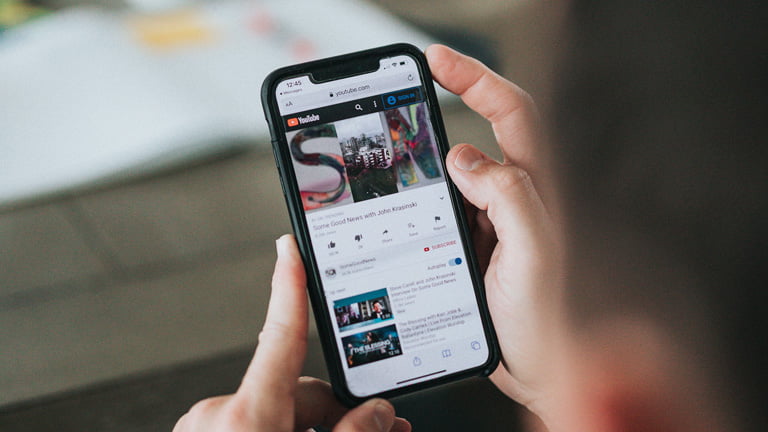
Mobile internet has become one of the crucial elements in our daily lives as it enables us to connect to the internet even when we do not have access to WiFi. Thanks to the mobile internet, you can still use essential data services like maps, search engines, email, and more while on the move. If you plan to travel to another country, one way to access mobile internet is by enabling the data roaming option on your device.
Turning data roaming on can give you access to the internet while on the move, making it easier to navigate your way around and stay in touch with loved ones. However, leaving data roaming on without caution can result in high data charges with an unexpectedly large bill when you return home. This article will explore the pros and cons of data roaming to help you decide if it is a good option for you and the best alternatives if you find it expensive to use roaming when you travel abroad.
What is data roaming?
Data roaming is a service offered by carriers, enabling your mobile device to connect to the internet while you are traveling outside your home network or country. Roaming makes it possible for your mobile device to connect to foreign networks that are outside your local carrier’s coverage. So, if you want to stay connected to the internet when you travel, turning on roaming is one of the options you can use.
Domestic mobile data vs. international data roaming
Domestic mobile data and international roaming are two different types of using data that are often misunderstood by some people. Here is how they differ:
Mobile data allows you to use your mobile device to connect to the network within the same country and in areas where your primary carrier’s coverage reaches. The data fees for accessing the internet via mobile data is included in your domestic cellular plan. If you registered for cellular services in your domestic carrier, you can use data within the data amount that is included in your cellular plan.
On the other hand, international roaming is a supplementary service provided by your domestic carrier which enables your mobile device, such as a phone, to connect to a foreign network when you travel outside your home country. With data roaming on, you can access voice and data services while abroad. The charges for international roaming are usually higher than using domestic mobile data charges.

Should I turn data roaming on or off?
Data roaming can be a very crucial service if you don’t have other options for accessing the internet when you are abroad. So if using data with international roaming service is the only way that you can use data, you can turn it on to use it. If not, you need to turn the data roaming button off to prevent unintentional data charges.
As we mentioned earlier, data roaming is expensive and can significantly increase your overall expenses for the trip. The charges for data roaming can range between $2 to $5 per MB of data. This is not a recommended option, especially if you want to use the internet to stream videos/music or download large files.
The good news is that there are several other options that you can use to avoid paying the extra fees of data roaming. We will share some of these options and their advantages later in the article. But first, let’s explore some of the common questions people ask about data roaming.
Most frequently asked questions about data roaming
Do I want data roaming on or off?
Whether you want data roaming on or off depends on your internet needs and the situation you are in. If you are traveling abroad and want to use your mobile device to access data services such as streaming music, email, social media, and web browsing, then you may need to turn on data roaming.
You need to understand that data roaming is a paid service provided by your domestic carrier and you will be charged besides your original domestic cellular plan. So data roaming is only viable if you don’t have any other means of connecting to the internet.
What happens if I turn off data roaming?
When data roaming is off, your mobile device will not be able to access the internet or data services such as web browsing, email, and social media if you’re not within the coverage zones of your local carrier. You will only be able to access these services if you use WiFi or switch to any of the local carriers in the country you have traveled to by changing SIM card or adding a local eSIM plan.
What happens if data roaming is on?
When you enable data roaming, your mobile device will be able to access a foreign network and access data services like maps, online music, and web browsing while you are traveling abroad. But you need to remember that data roaming is way more expensive when compared to using the mobile internet services of the local carriers.
Is it OK to leave data roaming on?
This choice depends on your needs and circumstances. Leaving data roaming on can be necessary if you urgently need to access the internet and you don’t have any other options besides using roaming. If you have other alternatives, like using WiFi or switching to a local carrier’s SIM service, then leaving data roaming on is not a good option.
Will I get charged if I turn off data roaming?
If you turn off data roaming, you won’t be charged any extra fees. So, you can always turn roaming off if you no longer need to use data services to avoid pilling up your data bill.

Is it best to use data roaming?
Data roaming is not the best option for travelers since it is very expensive compared to other alternatives. You will save money if you choose to use the data plans offered by any of the local carriers in the country you have traveled to. Also, the network data quality is way much better when you use data with local data service than roaming. Most of the local carriers in the US provide two data plans; SIM card data plans and eSIM data plans. Let’s share the details of each below;
Physical SIM card
With SIM card data plans, you will need to insert a small plastic card into your mobile device to connect to your carrier’s network. Once you insert this card into your mobile device, you can access voice and data services, make phone calls, and send text messages. SIM cards are widely used and can be purchased from mobile providers or retailers.
The main benefit of using SIM cards is that they are widely available and supported by most carriers and mobile devices. However, most of the carriers in developed countries, including the USA, Canada, and Europe, support eSIM as well.
eSIM
An eSIM is an electronic SIM that is embedded in your mobile device’s hardware and can be activated remotely by your carrier. With an eSIM, you don’t need to swap a physical SIM card to connect to your carrier’s network. Instead, you can download an eSIM profile and activate it on your device. Using eSIMs is the best option since it has more benefits than physical SIM cards. Some of these benefits include the following;
- Convenience of installation
One of the major advantages of using eSIM over traditional SIM cards is the convenience you get. With eSIMs, you don’t need to physically swap out SIM cards when switching carriers or plans. Instead, you can activate a new eSIM profile remotely. This makes it a convenient option, especially if you find yourself frequently switching carriers when you travel. - Flexibility to set up several profiles
eSIMs can be used with multiple carriers and plans on one device, which can give you more flexibility when choosing a data plan. For instance, most modern smartphones allow users to activate over eight eSIMs. This allows you to switch from one SIM to another without having to go through the lengthy process of activation or swapping out physical SIM cards. - Secure
eSIMs use a secure chip to store data, making them more secure than physical SIM cards. Since eSIMs are embedded in your device’s hardware, it is hard for bad actors to tamper with your SIM data if your mobile device is stolen. Also, unlike physical SIM cards, eSIM can’t be damaged by physical factors. If you are someone who cares about security and privacy, choosing eSIM over physical SIM cards should be a no-brainer. - Environmentally friendly
Since eSIMs are not physical cards, they don’t contribute to electronic waste. This makes eSIM the best alternative for anyone cautious about polluting the environment.
Final thoughts
This article has discussed the different situations where it may be viable to turn data roaming on or off. While data roaming can be convenient for accessing mobile data services while abroad, it can also lead to high charges and unexpected fees. Therefore, data roaming should only be used if you don’t have other alternatives for connecting to the internet. You should consider using local SIM services to avoid incurring extra expenses of roaming fees.
If you’re someone who frequently travels abroad, switching to an eSIM data plan is the best option. With an eSIM, you can remotely activate a new data plan when traveling internationally without needing to purchase a physical SIM card. eSIMs also offer greater flexibility and convenience, as they can store multiple profiles and can be activated remotely, making them a great option for frequent travelers.
If you plan a trip to the USA, consider checking out eSIM USA for the best eSIM data plans. eSIM USA has several unlimited and limited data plans that you can choose from depending on your budget and data needs.
Related Products
-
Product on sale
 eSIM USA Fixed Plans$3.99 USD – $39.99 USD
eSIM USA Fixed Plans$3.99 USD – $39.99 USD -
Product on sale
 eSIM USA Unlimited$11.99 USD – $77.99 USD
eSIM USA Unlimited$11.99 USD – $77.99 USD



